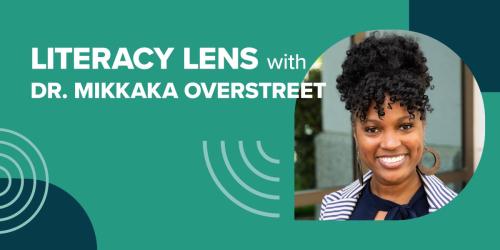Helping Students With Dyslexia Find Their Reading Motivation

Without the support of adults, students with dyslexia can lose their motivation as readers. Imagine how frustrating it must be to know the answers on a test but perform poorly because of your reading skills, or to be called upon to read a passage aloud, fearing that you will make mistakes in front of your classmates.
Dyslexia does not affect a student’s intelligence or ability to comprehend spoken language. It only impacts their ability to decode written texts. For students with dyslexia, decoding text is not only frustrating but also exhausting.
In discussing ways to build the motivation of students with dyslexia as readers, let’s start from a place of compassion. As vital as the science is to understanding how to meet the needs of students with dyslexia—and the strategies highlighted in this post draw heavily from the evidence-backed practices in the IES Practice Guide on improving adolescent literacy—it’s just as important to understand why these students need our support.
Discover Students’ Strengths
In The Gifts of Dyslexia, author Mike DeLong points to traits such as creativity and the ability to think multidimensionally that are often found in people with dyslexia. Malcolm Gladwell’s book David and Goliath identifies several prominent Americans with dyslexia who through determination became successful in their fields.
It’s important to find what your students with dyslexia do well and set them up for success through solid teaching practices such as cooperative and self-directed learning.
In my own experience, I found many of my students with dyslexia to be both gifted and challenged in ways that were exceptional. Yet, most of my students would have gladly traded these gifts for the ability to read easily.
Build Perseverance
According to the IES Practice Guide, evidence suggests that motivation to read school-related texts declines as students’ progress from elementary to middle school, and the decline is worse for struggling readers, especially students with dyslexia.
Yet, when reading something they are interested in, students with dyslexia will persevere and will often show an ability to comprehend texts above their reading level. One approach is simply to let students choose what they read as much as possible.
Another approach is to tap into technology by letting students listen to audiobooks. Many wonderful selections of narrative text are available in an audiobook format, which provides students with dyslexia the content of a text without the challenge of decoding the printed word.
Give Students a Purpose for Reading
As addressed in the IES Practice Guide, when teachers share specific content learning goals, students are more likely to stay motivated. When students set their own learning goals, they are even more likely to be fully engaged. This is especially true for students with dyslexia.
Two simple approaches to this are:
- Asking students to create their own questions about a reading passage rather than using questions prepared by the teacher.
- Using a skeleton outline that includes main ideas and requires students to fill in details based on their reading. (You can also turn this around by providing the details and having students identify the main ideas.)
While these approaches can build motivation, they don’t lessen the reading and note-taking challenges that students with dyslexia face. In contrast, students with dyslexia often have strong auditory comprehension and verbal skills, so taking a cooperative, small-group approach to reading activities can give them more chances to participate and shine.
Promote a Positive Learning Environment
Adolescents do not like to be embarrassed in front of their peers. For example, during an activity in which students take turns reading aloud, struggling readers may try to guess the passage they will be called upon to read and silently rehearse that section until they are called. When they do this, they are not paying attention to the sections other students are reading.
Rather than set an expectation for students with dyslexia to read aloud in class, find other strategies that allow them to demonstrate their skill level, understanding, and engagement. For example, if you’re learning goal is fluency, have students with dyslexia read aloud to you alone or give them the option of submitting an audio recording of their reading. If your goal is comprehension, create opportunities for them to show what they know without having to read aloud.
Other approaches that work include close reading (in which students mark up a text to identify main ideas as well as words they don’t know) and anchor charts (easily referenced structures for finding meaning). These tools can help all struggling readers, not just students with dyslexia.
Provide Additional Time for Reading
Perhaps the easiest way to accommodate learning differences is simply to provide students with dyslexia extended time to complete reading assignments and tests.
Sally Shaywitz, one of the nation’s leading experts on dyslexia, identifies removing time constraints as one of the most effective accommodations for students with dyslexia. It eases students’ anxiety, while also allowing the teacher to more accurately evaluate their understanding.
Ultimately, it’s important to understand that dyslexia is not a problem that can be “fixed” or “cured.” Students with dyslexia may always read slower than their non-dyslexic peers, but it is essential that teachers do not take a deficit approach to addressing their needs. Teachers can create a richer learning experience for everyone by providing the necessary accommodations for students with dyslexia, while also embracing the unique skills and perspectives they bring.



